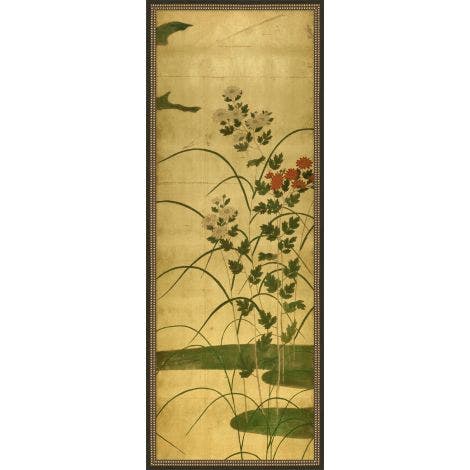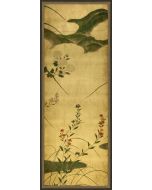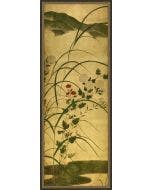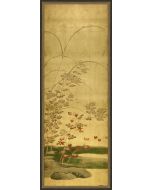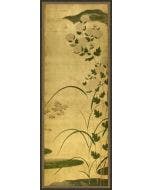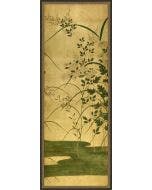Local Storage seems to be disabled in your browser.
For the best experience on our site, be sure to turn on Local Storage in your browser.
Gilded Garden Chinoiserie 5

This Met x Wendover Art Group design is a reproduction of an original work of art in The Metropolitan Museum of Art collection.
Birds and Flowers of the Four Seasons
Japan, Momoyama period (1573–1615)
Pair of six-panel folding screens; ink, color, gold, and gold leaf on paper; late 16th century
Purchase, Mrs. Jackson Burke and Mary Livingston Griggs and Mary Griggs Burke Foundation Gifts, 1987 1987.342.1, .2
This elegant composition of cranes among flowers, presented in a seasonal progression from spring to winter, is a suggestion of longevity. It’s featured on a pair of lavish six-panel folding screens made in late 16th-century Japan during the Momoyama period (1573–1615), when images with exaggerated, high-relief details were popular. Vivid colors and strong ink outlines against a golden background are characteristic of Kano Motonobu (Japanese, 1476–1559), founder of the famous Kano school of painting, while the boldness is evocative of his grandson Kano Eitoku (Japanese, 1543–1590). In their grandeur, these screens reflect the luxurious taste that prevailed in the mansions and temples of the capital during the period.

This Met x Wendover Art Group design is a reproduction of an original work of art in The Metropolitan Museum of Art collection.
Birds and Flowers of the Four Seasons
Japan, Momoyama period (1573–1615)
Pair of six-panel folding screens; ink, color, gold, and gold leaf on paper; late 16th century
Purchase, Mrs. Jackson Burke and Mary Livingston Griggs and Mary Griggs Burke Foundation Gifts, 1987 1987.342.1, .2
This elegant composition of cranes among flowers, presented in a seasonal progression from spring to winter, is a suggestion of longevity. It’s featured on a pair of lavish six-panel folding screens made in late 16th-century Japan during the Momoyama period (1573–1615), when images with exaggerated, high-relief details were popular. Vivid colors and strong ink outlines against a golden background are characteristic of Kano Motonobu (Japanese, 1476–1559), founder of the famous Kano school of painting, while the boldness is evocative of his grandson Kano Eitoku (Japanese, 1543–1590). In their grandeur, these screens reflect the luxurious taste that prevailed in the mansions and temples of the capital during the period.


